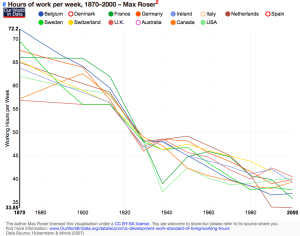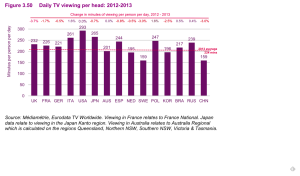Post-modernism, according to Wikipedia, was “a movement that represented a departure from modernism”. Useful. So what’s modernism? One definition explains it as “modern thought, character or practice”.
Strange start to today’s blog post you might think. But bear with me.
I read an awesome article today by Mike Loukides which provides much of the context here. You should take a moment now to go and read it. In it, he discusses hearing the phrase “postmodern computing” for the first time back in the summer of 2014 and then proceeds to explain why the words provide a valuable perspective that needs to be considered when observing developments within the computing industry (if indeed you can call something so varied and distributed a single industry any longer – which is kind of the point).
In the arts, modernism was (broadly speaking) the view that times had changed and that it was necessary to move away from tradition in order to reflect the rapid evolution in the social and economic environment. The movement was defined by a form of honest yet naive faith of some sorts, a belief that the future would inevitably be better as a result of the cumulative effect of many advances, particularly across the fields of science and the arts.
But it was followed by post-modernism which in many ways represented the death of such optimism as the realisation grew that some form of techno-utopia was not, in fact, just around the corner. Progress was not universally and equally distributed across all people in the way that so many had hoped With the advances that facilitated online cooperation on a global scale came difficulties that to us now seem obvious in retrospect.
As Loukides points out, the same technological leap forward in the realm of online communication that enabled the Arab Spring has been used as a tool of harassment by many, the benefits of online commerce negated by the damage caused by online fraud and the sharing of personal details with loved ones across social platforms has also provided the information that is oxygen for the surveillance state that we now inhabit.
So as the picture tarnishes, what are some of the themes that will run through this new era of postmodern computing?
Clearly peer-to-peer computing will play a significant role. And it’s here that Bitcoin provides us with a crucial innovation. Not for the currency, but for the blockchain itself. As Loukides so nicely puts it:-
“The blockchain is a technology for verifying transactions in the absence of trust. I’d go even further: it’s a verification technology that works even if everyone participating is someone you distrust. Why should I trust a Bitcoin miner, whose primary incentive is to get rich quick? No reason at all: the genius of the blockchain is that you don’t have to.”
It’s a great articulation of the real reason why there’s so much excitement around the so-called Bitcoin 2.0 projects within the community – and also why all those critics who have failed to spend any time understanding the scene are missing out on the oh-so-important bigger picture. All around the world, people are now working to build applications that tap into the blockchain’s ability to verify data in the absence of trust.
And when it comes to the widespread surveillance uncovered by Snowden, this new era of postmodern computing is likely to see individuals using such tools (as intended or modified) to protect themselves. For example, the Tor network has a very unusual dynamic – funded by US military for surveillance purposes to help obfuscate intelligence communications online (protecting spies in the field and suchlike), it’s now somewhere that half of the government is trying to infiltrate en route to unmasking criminals whilst the other half is trying hard to protect to maintain its effectiveness. Yet such technologies are increasingly being utilised defensively by individuals across the world (much to the consternation of governments).
Loukides’ final point is just as important. As we transition into the realism of this post-modern age, the traditional view of computing has finally become outdated. No longer can you realistically seek self-sufficiency. The reality is that with the distribution of computing power, we now have a vast cloud network utilising hardware that is controlled by third parties whose location we are unable to track definitively with ease. Reliance on others is now the most common reality.
I like articles that force me to step back and reconsider the bigger picture. And for me, this is the best this year.



